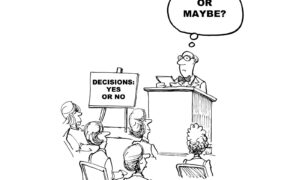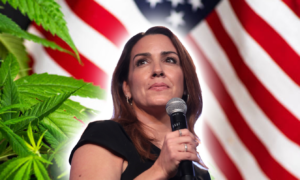Banning Retail Cannabis Outlets Fuels The Illicit Market

It’s time we recognize the unintended consequences of Prop. 64
Reshared with permission
Guest Commentary by Tiffany Devitt, Chief of Govt. Affairs for CannaCraft
In 2016, 57% of voters in California backed Proposition 64, the Adult Use of Marijuana Act. There can be no doubt that voters expected legalization to increase access to regulated cannabis while helping rid the state of a dangerous illicit market. But the five years since have proved once again that reality rarely lives up to expectations.
This “disappointment gap” has very real negative implications. Prop. 64 began with the blunt statement: “It is the intent of the People in enacting this Act … to take non-medical marijuana production and sales out of the hands of the illegal market.” And yet, today, there are fewer licensed retail outlets in the state than there were in 2015; legal cannabis sales are declining, and an emboldened illicit market is growing.
At the heart of the issue is the dual licensing structure that was implemented while converting Prop. 64’s broad agenda into a regulatory framework. This not only required cannabis businesses to be licensed by both the state and a local jurisdiction, but also allowed municipalities to opt out of licensing cannabis businesses altogether. In doing so, it precipitated the closure of thousands of medical cannabis dispensaries and the creation of new “dry” zones across the state.
It’s time we recognize the unintended consequences of Prop. 64 and this Prohibition Era thinking, which reduced access to medical cannabis and opened the door wider to the illicit market.
Despite popular approval of Prop. 64, only 85 of the state’s 500 municipalities allow retail cannabis sales. This leaves 82% of the state’s towns unserved or under-served and their residents between a rock and a hard place: forced to travel long distances to purchase legal cannabis or buy unsafe products from illicit dealers.
Looked at another way, under California’s medical marijuana program, there were thousands of nonprofit medical dispensaries in operation prior to Prop. 64. Today there are a mere 800 or so licensed cannabis retailers in the state. That means California has just two legal dispensaries for every 100,000 residents while other long-established recreational markets (Oregon and Colorado) have 7 to 9 times that many.
Regulators have issued a series of press releases highlighting efforts to increase the number of licensed businesses in the state. That’s well and fine. However, the reality is that most new retail licenses are being issued in jurisdictions that are already adequately served. So, rather than expanding access to regulated cannabis, the increase in licensees is simply destabilizing existing retailers by increasing competition without opening the market.
Many municipalities chose to opt out of the state cannabis program because they feared such businesses would invite crime and diminish the quality of life for residents. The irony is that it is retail bans that have done this. In the absence of reliable access to regulated cannabis, California is ceding control of the market to illicit operators and putting people’s health at risk.
It is time for California cities and counties to rethink our approach to protecting and serving constituents and to contemplate who really wins when cannabis businesses are banned.
Source: Cal Matters




































